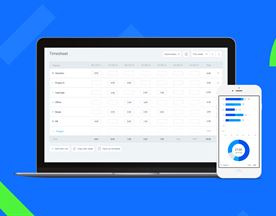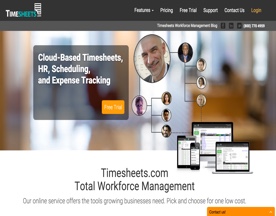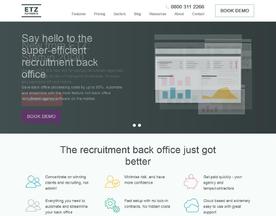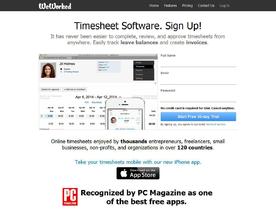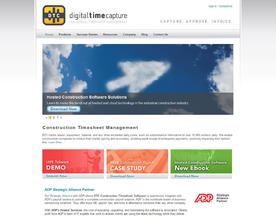A timesheet, how hard can it be to choose one? It’s simple, right? It’s a grid on a screen or on a phone and you type in numbers. How can that be difficult?
Choosing a timesheet can be deceptively difficult. Yes, it’s a grid on a screen or an entry on a phone but that’s the entry of the data. Once the data is entered, what happens to it is wholly dependent on what that timesheet was created to do. There is often more than one need for a timesheet in an organization and that can lead to some pretty strange results when choosing one.
Consider this situation, the Finance department decides to automate the Payroll. They’ve got a brand new Payroll system. They’ll need to feed it hours so a Time and Attendance timesheet seems perfect to them. No one argues or questions their choice. After all, you want to get paid, right? Finance picks a time and attendance timesheet and deploys it company-wide.
A few months later, the Human Resources department decides to automate Vacation Management and, while they’re at it, their plan is to include the automation of other entitlements. They look at the time and attendance timesheet that Payroll selected and see that it’s completely inadequate for their needs. The time and attendance system tracks when people are in but not why they are out. HR needs a timesheet system and a vacation approvals system that will determine what happened when an employee is not here. They decide they’ll need their own timesheet system but entries only need to be made when the employee will be absent or returns from an absence.
A few floors down, the Project Management Office is having project tracking issues. They get a general idea of how tasks are progressed but are certain that efficiency could be improved if only they could get actual hours spent per person per task to compare against their original plan. Neither the time and attendance timesheet system for Payroll nor the entitlements timesheet system for HR has anything like that level of detail. The solution? A project-based timesheet.
If you think this could never happen, you’d be incorrect. Or, if you’re thinking, that this sounds just like your own organization but were certain that you were the only one, again, you’d be incorrect. It’s amazingly common. There is no executive who wakes up one morning and says to themselves, “I’ve got a great idea, let’s implement numerous timesheets at once!” It happens over time with the best of intentions in different departments for different reasons but the end result can be employees filling out two, three, four or more timesheets every week.
There are numerous types of timesheets and, for the most part, they’re all designed to focus on one organizational process. We haven’t even named them all. There can be timesheets that are related to biometrics for shift-type work (think of people in a hospital) or security system timesheets for people working in manufacturing where they always do the same thing.
Even in this day and age, there are still thousands of companies who, perhaps frustrated with the selection process still do their timesheets on paper, then transpose the results to a spreadsheet or to different systems.
Solving this challenge means doing a bit of homework before your selection process begins.
First, what are you trying to accomplish?
Let’s start with what your intention is. What will you do with the timesheet? There are many people who look at timesheet system selection as a series of functions on a spreadsheet. They interview different managers who say they have an interest in picking a timesheet and who give them a list of features important to them. The list is pulled together into one big spreadsheet and sent to vendors. Often the features conflict.
Aside from thinking of features, it is critical to think of process. Where will this timesheet data go once it has been entered? Who will approve the data? Are there different types or different levels of approval? Will the data need to be validated against other systems? Will the timesheet data need to be transported to other systems or will other systems need to move data into the timesheet? How will you deal with conflicts in process?
A white board and all the interested parties in one conference room is often the starting point for this.
If this is a single purpose timesheet, what are future plans for other parts of the organization?
It’s certainly possible that your particular needs are going to be solved with one type of timesheet. If that’s the case, your selection process just got a whole lot easier. If not, you might want to think about a different kind of solution to this challenge.
Multi-purpose timesheet systems might be the solution
There are some timesheet systems that are designed to be multi-purpose. They are often not the first selection because set up of such a system can be more complex. The TimeControl timesheet system is one such example. This system was designed to serve multiple purposes at once starting with the lowest level of detail, the task. TimeControl’s history goes back to the 1980s where project systems were becoming prevalent and corporate timesheets were still often not automated. The developers created a Finance-quality auditable timesheet which could certainly be used for Payroll but made entries at the task level so it could be also used for Project Management.
Flexibility in any multi-purpose timesheet is the critical feature. How much can the system flex to accommodate different processes. Can you add many user defined fields without writing source code? Can you use security to hide some data and functions from some users while exposing those to others? Can you accommodate associated processes like expense report collection?
The TimeControl people have continued to enable different processes over time in both their SaaS and on-premise systems. Their TimeRequest feature provides vacation request approval and management. Their Crew Timesheet feature accommodates field data collection for those not even in the office. Their Accruals feature helps with HR to create an auditable trail of earned entitlements like vacation, sick leave, and personal time off.
A central element of any multi-purpose timesheet will come down to approvals. It makes sense once you think of it. When multiple departments and processes will use the same data entry system, there will be multiple interests in approving that data. The TimeControl team coined the term A Matrix Approval Process for Labor Actuals. It allows data to be approved in one direction for completeness and for totals, perhaps for Payroll purposes. It also allows line item approvals to happen for task type data for processes such as Project Management, Billing, Entitlements, Client Approval and more.

Is there a down side, you ask? If there is, it’s that flexibility requires taking on the responsibility for the organization’s processes and keeping track of what the timesheet system is supposed to do.
The upside for that work can be huge. The idea of using a single timesheet, deployed to all employees and even contractors collecting data and then parceling it out as needed to multiple systems creates efficiencies in numerous ways. Not only is there only one timesheet rather than multiple being entered, but there is only version of time data. The concept of having to reconcile timesheet data from disparate systems fades away like a bad nightmare.
As you look for your own timesheet system, think first of what you need for it to do and if there is more than one corporate process involved, think about a multi-purpose timesheet.





